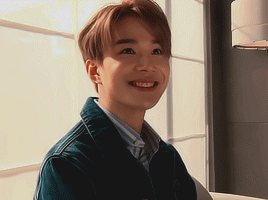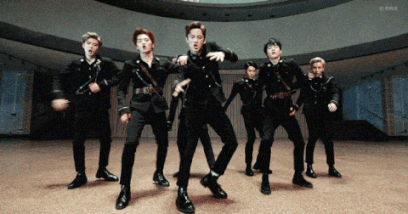#tingyou
Text

This cute is turning 22 today! Happy birthday Jungwoo! We’re so glad that you’re back, healthier and happier than ever <3
#Kpop#kpop gif#not my content#my favourites#kpop birthday#Jungwoo#jungwoo gif#Kim Jungwoo#Jin Tingyou#NCT#nct gif#NCT U#nct u gif#NCT 127#nct 127 gif
12 notes
·
View notes
Text
History and Theory Resources
Chen,Tingyou. Chinese Calligraphy. China Intercontinental Press, 2010.
The book provides overview of Chinese calligraphy’s history and development through the dynasties. Photographs of the calligraphy writings and inscribed objects are explained in detail as examples. The text also covers the different scripts that evolved, and how some of them were used. I find this one particularly helpful since it mentioned the use of calligraphy elements in contemporary art, and drawing a parallel from Joan Miro’s symbols with the ancient pictogram inscriptions.
Eric C. Mullis. "The Ethics of Confucian Artistry." The Journal of Aesthetics and Art Criticism 65, no. 1 (2007): 99-107. http://www.jstor.org/stable/4622214.
Confucianism has been a dominating cultural influence for Chinese arts and science. Scholars, artists, and people of educated background had respected values and virtues of the teachings, thus Chinese artistry is theorized to be shaped after Confucianism. The text looks at the relationship of Chinese art and Confucian values, drawing parallels that the virtues is what led to the organic shapes in calligraphy. While used in contemporary art directed to non-Chinese viewers, the audience is unaware of the influence of Confucianism in the culture, so there could be a lot of difference for the calligraphy in different time both stylistically and conceptually.
Jiang, Jiehong. “Burden or Legacy: From the Chinese Cultural Revolution Contemporary Art.” Hong Kong University Press, 2007.
The book included papers by scholars and artists from China and the UK, describing the contemporary art of Chinese artists. In the book, the author pointed out examples of contemporary artists using calligraphy as an art instead of writing, and tackling the theme of “anti-writing”. The text provides a lot of historical background of the artists introduced, and gives insight into the Chinese art from a more contemporary perspective.
Little, Stephen. "Chinese Calligraphy." The Bulletin of the Cleveland Museum of Art 74, no. 9 (1987): 372-403. http://www.jstor.org/stable/25160005.
Stephen Little introduces calligraphy’s role in the Chinese culture. The article published by Cleveland Museum of Art aimed to provide historical contexts for the audience to learn how to appreciate the handwritings as a form of art from the past. Aside from historical conext, Little touched points on the artistic characteristics of Chinese calligraphy, such as stroke, form, and composition. Examples were provided to link together with the words and painted artworks. This article has information on how Chinese calligraphy is traditionally perceived and the common characteristics between them. The information can be used to make comparisons when looking into the contemporary changes in my own research.
Zhou, Zhen. “The Size Principles of Chinese Writing and Its Application Design As Design Idea.” Studies in Literature and Language 8. no. 3 (2014): pp. 84-88. http://www.cscanada.net/index.php/sll/article/view/4968.
The article looks at design from the perspective of Chinese writing and evaluate its impact. The essay focused on the language’s origin from a pictogram and theorizes on transforming the thought process behind a language into design idea, such as logo marks.
0 notes
Text
My Favourite NCT U Music Videos
Number 3: Boss
1. Visual: I gave this category a 7/10. I do like the visuals in this video. The outfits are amazing all round. The members look great in their scenes. It’s well acted, the choreography featured is nice. There is a nice distribution between individual shots, group shots and choreography shots. It’s in HD, so it ages well. The cons of this video is that I feel there are too many locations in the video that you lose the story and you can’t give justice to all of them with the little amount of screen time that they get. It kinda feels like they didn’t know what they wanted to put in this video or what they wanted the finished product to be, so they put in as much as possible to make it eye catching. Also, the screen distribution wasn’t that fair; particularly for Winwin, Doyoung and Jungwoo. Despite all that, it is a very nice video to watch.

https://www.pinterest.com.au/pin/448600812876746366/?lp=true
2. Song: I gave this category a 7/10. I do like this song. The lyrics are nice. The composition is nice. The tone of the song suits the lyrics. The vocals from Jaehyun, Doyoung and Jungwoo are great! The raps from Taeyong, Mark and Lucas are nice. and then there is Winwin; the forgotten one. The problem I have with NCT is that the members who aren’t the most popular often get little to no lines. Actually, most SM groups are like that. It is very evident in this song, with Winwin getting 7% of the lyrics in the song and Doyoung getting 19%. I have no problem with giving the more vocally talented members more lines, but 7% is ridiculous. Enough said.
3. Dance: Finally I can say something in this category! I gave this category an 8/10. I really enjoy this dance. There are some really nice moves in this dance. It flows well, it fits with the song, each member seems to enjoy the dance and gets their spotlight. The dance is strong and quite smooth at the same time. Some parts make me a little confused, but overall, it’s one of my favourite choreographies from NCT.
4. Personal enjoyment: I must admit, I don’t like this song as much as I used to (I think I overplayed it), however, I still enjoy this music video and will watch it a lot. Lucas, Winwin and Jungwoo were a nice addition to NCT U and each added their own part in the song and dance and made it more interesting to watch. The visuals, song and dance make it a really addition to NCT’s discography. I gave this category an 8/10
Total: 30/40.
#Kpop#kpop gifs#NCT gif#NCT U#Taeyong#Lee Taeyong#Doyoung#Kim Doyoung#Jaehyun#Jung Jaehyun#Jung Yoonoh#Winwin#Dong Sicheng#Dong Sasung#Jungwoo#Kim Jungwoo#Jin Tingyou#Lucas#Wong Yukhei#Mark#Mark Lee#Lee Minhyung#not my content#favourite music videos#my favourites#NCT
0 notes
Photo

Chen,Tingyou. “Signs on ancient pottery.” Chinese Calligraphy. China Intercontinental Press, 2010.
0 notes